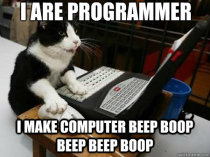I have occasionally been asked about what blogs currently exist in phylogenetics, because there seem to be very few. There are blogs in related areas, such as phyloinformatics, evolutionary biology, and systematics, but very few blogs dedicated primarily to phylogenetics (not just occasionally mentioning it).
Below is a list of the current and former blogs that I know about. In each case I have provided basic information taken from the blog itself. Please let me know about any suitable blogs that have been missed.
Current General Blogs
The Genealogical World of Phylogenetic NetworksBiology, computational science, and networks in phylogenetic analysis. This blog is about the use of networks in phylogenetic analysis, as a replacement for (or an adjunct to) the usual use of trees. This topic has received considerable attention in the biological literature, not least in microbiology (where horizontal gene transfer is often considered to be rampant) and botany (where hybridization has always been considered to be common). It has also received increasing attention in the computational sciences.
Contributors: David Morrison, Steven Kelk, Leo van Iersel, Mike Charleston, Jesper Jansson
Started: 25 February 2012
TreeThinkersTreeThinkers is a blog devoted to phylogenetic and phylogeny-based inference. We aim to use it as a place to discuss recent research and methods; to ask and answer questions; and serve as a general resource for news and trivia in phylogenetics. Although the blog is associated with the Bodega workshop, we welcome posts and participation from the entire phylogenetics community.
Contributors: Bastien Boussau, Gideon Bradburd, Jeremy Brown, Rich Glor, Tracy Heath, David Hillis, Sebastian Höhna, Luke Mahler, Mike May, Brian Moore, Samantha Price, Peter Wainwright
Editor: Bob Thomson
Started: 2 October 2012
Open Tree of LifeThe tree of life links all biodiversity through a shared evolutionary history. This project will produce the first online, comprehensive first-draft tree of all 1.8 million named species, accessible to both the public and scientific communities. Assembly of the tree will incorporate previously-published results, with strong collaborations between computational and empirical biologists to develop, test and improve methods of data synthesis. This initial tree of life will not be static; instead, we will develop tools for scientists to update and revise the tree as new data come in.
Contributors: Robin Blom, Karen Cranston, Karl Gude, Mark Holder, Rosemary Keane, Rick Ree
Started: April 8, 2012
The Bayesian KitchenStatistical inference and evolutionary biology. Undoubtedly, since its introduction in phylogenetics in the late 90's, Bayesian inference has become an essential part of current applied statistical work in evolutionary sciences. However, there are still many problems, computational, theoretical and even foundational. After ten years of applied Bayesian work in phylogenetics and in evolutionary genetics, I feel the need to step back and re-think the whole thing.
Contributor: Nicolas Lartillot
Started: 24 December 2013
EvoPhyloEvolution, phylogenetics, bioinformatics, stuff.
Contributor: Dave Lunt
Started: 30 January 2008
Current Program Blogs
Phylogenetic Tools for Comparative BiologyThis web-log chronicles the development of new tools for phylogenetic analyses in the phytools R package. Unless you a reading a very recent page of the blog, I recommend that you install the latest CRAN version of phytools (or latest beta release) before attempting to replicate any of the analyses of this site. That is because the linked functions may be archived, and very likely have been replaced by newer versions.
Contributor: Liam Revell
Started: 11 December 2010
Osiris PhylogeneticsAccessible and reproducible phylogenetics using the Galaxy workflow system.
Contributor: Todd Oakley
Started: 7 September 2012
Blogs Currently in Limbo
DechronizationDechronization is authored by evolutionary biologists interested in the development and application of methods for estimating phylogeny and making phylogeny-based inferences. The goal of the blog is to provide a forum for discussion of the latest research and methods, while also providing anecdotes, tidbits of natural history, and other related information.
Contributors: Rich Glor, Luke Harmon, Brian Moore, Tom Near, Dan Rabosky, Liam Revell
Started: 29 April 2008 Last post: 6 June 2011
CYPHY - Cybertaxonomy and PhylogeneticsMostly harmless pointing at things pertaining to cybertaxonomy and phylogenetics.
Contributor: Matt Yoder
Started: 6 November 2007 Last post: 23 February 2011
Fish PhylogeneticsI created this new blog to share thoughts on work from my research group on the phylogenetics and evolutionary biology of fishes. This will provide a forum to share insight about the studies that we publish, discuss important scientific aspects of fish diversity, reflect on my experiences teaching ichthyology (the study of fishes), and to comment and review contributions by other researchers.
Contributor: Tom Near
Started: 23 August 2012 Last post: 15 September 2012
Taxonomy PhylogenyTaxonomies group organisms according to phenotype, while phylogenetic systems groups organisms according to shared evolutionary heritage.
Contributor: ???
Started: 1 January 2008 Last post: 31 December 2010
Phylogenetic GeekA bag of info on phylogenetics.
Contributor: ???
Started: 5 August 2011 Last post: 16 September 2011


 Following the lead of
Following the lead of